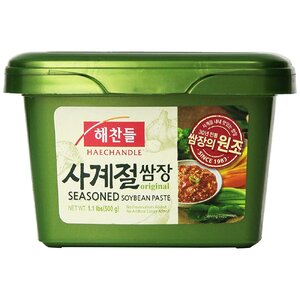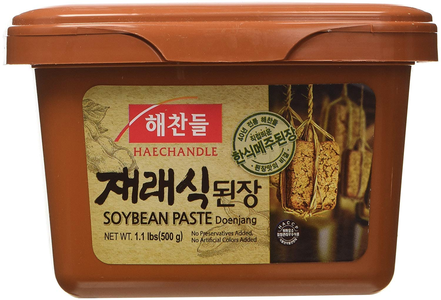adventurousbaker
Well-Known Member
Zhajiangmian is a traditional dish originating from Northern China and popularly eaten cold during the hot summer months. You can find this dish in many restaurants specializing in Northern Chinese or Beijing cuisine and a similar dish in Korean restaurants under the name jjajangmyeon.
The recipe here uses minced pork as the base – you can also use other meats or well-scrambled egg instead. Toppings are even more varied – thinly sliced cucumber is traditional but feel free to try other fresh/pickled vegetables like carrot and daikon, sliced omelette, fried peanuts, anything that you feel would go well!
Ingredients (4 servings)
Noodles
270g flour
1/2 tsp salt
1/2 tsp baking soda
175g lukewarm water
Sauce
1 tbsp neutral cooking oil
1 tsp minced ginger
1 green onion, finely chopped
150g ground pork
1/2 tbsp Shaoxing cooking wine
1/2 green bell pepper, diced
1 – 2 tbsp fermented soybean paste
1 egg
1/2 cucumber, sliced, for topping
Method
View: https://www.youtube.com/watch?v=S62o_c8oMMQ
The recipe here uses minced pork as the base – you can also use other meats or well-scrambled egg instead. Toppings are even more varied – thinly sliced cucumber is traditional but feel free to try other fresh/pickled vegetables like carrot and daikon, sliced omelette, fried peanuts, anything that you feel would go well!
Ingredients (4 servings)
Noodles
270g flour
1/2 tsp salt
1/2 tsp baking soda
175g lukewarm water
Sauce
1 tbsp neutral cooking oil
1 tsp minced ginger
1 green onion, finely chopped
150g ground pork
1/2 tbsp Shaoxing cooking wine
1/2 green bell pepper, diced
1 – 2 tbsp fermented soybean paste
1 egg
1/2 cucumber, sliced, for topping
Method
- In a large bowl, add the flour, salt, and baking soda together and mix it evenly. Then, pour in all the water and stir until clumps form.
- Knead in the bowl for 8-10 minutes until the dough is homogenous, your hands are clean, and the bottom of the bowl is clean.
- Cover the bowl with plastic wrap or a damp towel and set aside for at least 20-30 minutes. The time is not critical, so it’s possible to leave for longer.
- Meanwhile, start on the sauce.
- Heat oil in frying pan over medium high heat until hot. Add ginger and green onion and stir until fragrant.
- Turn down heat to medium and add ground pork to pan, making sure to break up the meat into small pieces. Once pork is no longer pink add the Shaoxing cooking wine and stir fry until wine is absorbed, about 1 minute.
- Add the diced green pepper and mix with the pork, cooking for about 1 minute.
- Add the fermented soybean paste and mix until even and pork is brown. You can adjust the amount of soybean paste to your taste.
- Turn down the heat to medium low and cover and let simmer for about 5 minutes. If the sauce appears too dry at any point, add a small amount of water and continue simmering.
- Lightly beat the egg and pour into the sauce, stirring quickly to prevent scrambling. Addition of the egg should lighten the colour of the sauce and thin out the consistency slightly.
- Once the egg is evenly mixed, turn up the heat and continue stir frying for about 2 more minutes, until the sauce has thickened.
- Transfer into a bowl and let it cool.
- Back to the dough – take the dough out of the bowl and knead it a few times to make it even. Coat it with a little flour and rolling can commence. The goal is to have a 1mm thick sheet at the end, so if you don’t have enough space (or strength), feel free to split the dough into multiple sections.
- Using whatever method feels comfortable to you, roll the dough into a long sheet, dusting with flour on either side as appropriate to enable the rolling.
- Once you finish rolling, dust both sides of the sheet with a light coat of flour and fold it in the sheet’s long direction, being careful not to allow the sheets to stick together. The purpose of this is to make cutting much easier.
- Cut the stack of sheets into the noodles, 2-3mm wide, being careful not to press down too firmly on the sheets with the hand holding the sheets so to prevent sticking.
- Toss the cut noodles in flour to maintain separation in the noodles.
- Place the noodles into boiling water on high heat and immediately stir them to prevent clumping.
- Let the noodles cook, stirring intermittently. When the water beings to boil again, add a small amount of cold water to stop the boiling. Again, let it cook for a few more minutes, and when the water reaches a rolling boil, take the noodles out.
- In a strainer, place the noodles under the tap and run cold water to shock them. This washes off the outer layer of gluten and chills the noodles to give them a more elastic texture. Place the cold noodles into a bowl.
- Now comes the creative part. With the sauce and cucumber you prepared earlier, top the noodles in whatever fashion you’d like. Then, mix it all together, and enjoy your fresh made bowl of Zhajiangmian!
Last edited by a moderator:




